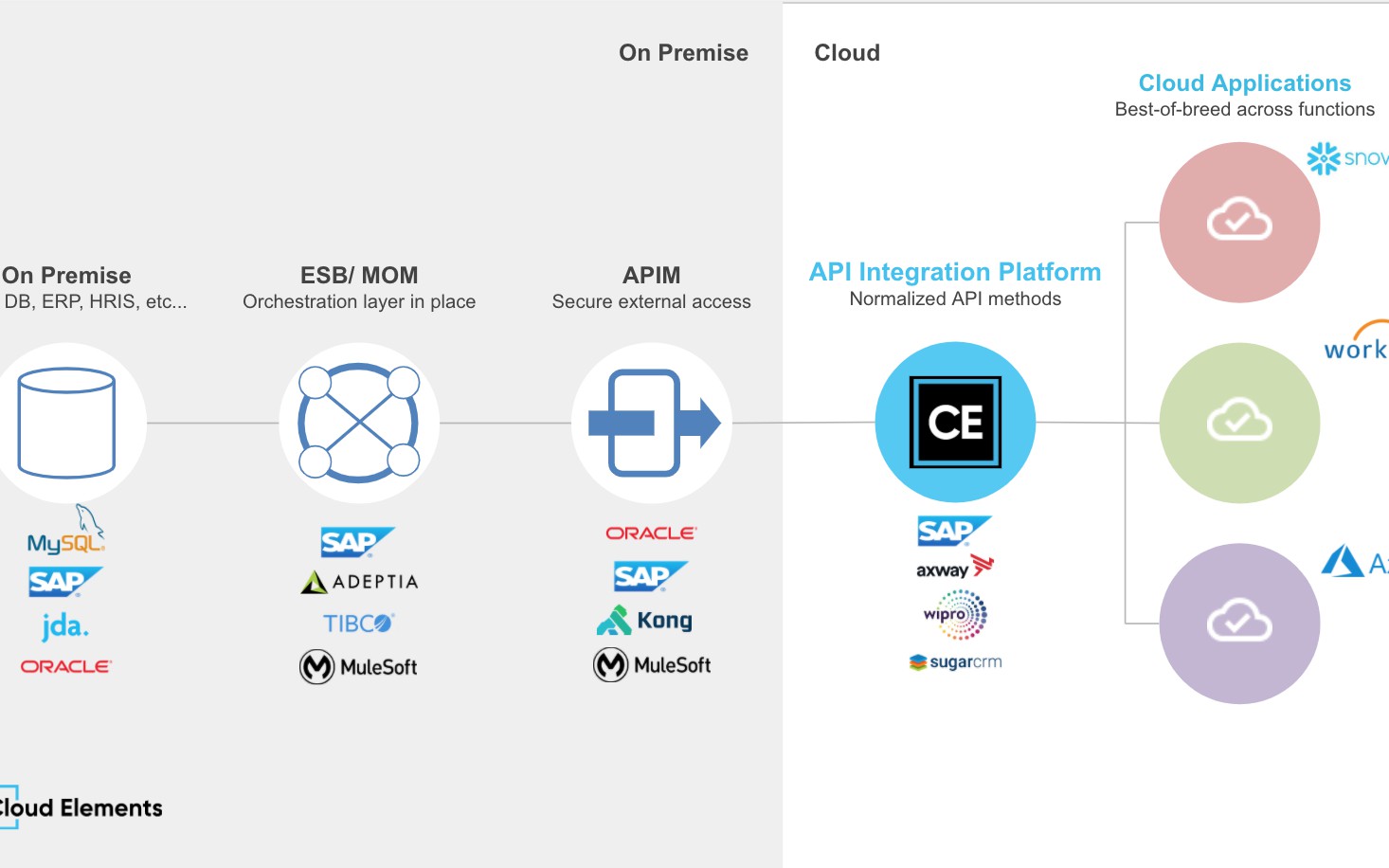After years of talking about ‘digital transformation,’ the relevant CIOs and analysts like Gartner are no longer talking about overnight change or quickly replacing legacy systems.
But that’s not to say change is glacial. Thousands of applications power the modern enterprise and many are cloud applications and IoT devices that communicate with each other and with on-prem systems via APIs (application programming interfaces). Today, APIs are novel only to Geoffrey Moore’s ‘laggards.’
What we find interesting, however, is the shift to positioning HIP as a product. Not an integration strategy or a conceptual framework, but a thing you can buy.
The challenge: most of the enterprise customers we work with already have some of the pieces of a HIP in place. If a HIP was just one more box to install atop a server rack, the conversation might be different. But as far as we see, from big banks to fintechs like American Express to pharma to iconic consumer brands like Bacardi rarely want to buy an entire HIP all at once.
What’s more, we often get asked, “Where does Cloud Elements fit in a HIP?” In these cases, we have to first ask exactly what this particular SI or this particular architect means by ‘a HIP’ before we begin to answer. That said, more and more we see two particular patterns emerge among our largest enterprise users. Before we get to patterns though, a simplified look at the pieces of a HIP:
There are nearly two dozen components in the Gartner HIP diagram; when we talk about it with customers, we try to simplify and start with just three pieces:
- On-Premises (on-prem) ESB or MOM middleware: this includes ETL database integrations, orchestrated integrations (data + processes) among multiple standalone applications, and EDI, which we include in ‘on-prem’ because EDI platforms are often owned and managed on-prem.
- Gateway: the technology that allows the enterprise to write, publish, manage and/or monetize APIs for “ground-to-cloud” orchestrated integrations and 3rd party access.
- Cloud Services: platform services from major cloud providers (such as AWS, Azure, and Google) fall into this category, along with orchestrated integrations between two cloud applications and devices/IoT.
#cloud
